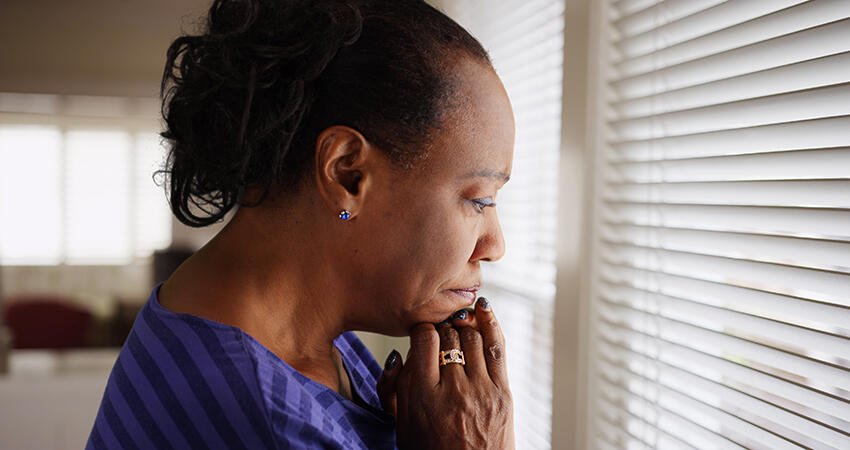
How Prior Economic Disadvantage Exacerbates Foreclosure Risks for Older Women of Color
- Title:
- How Prior Economic Disadvantage Exacerbates Foreclosure Risks for Older Women of Color
- Author:
-
Amy Castro Baker, Stacia Martin-West, and Anna Wood
- Source:
- Publication Date:
-
2017
The Great Recession disproportionately affected older adults and women of color—groups relying on their homes for both housing stability and wealth. Despite this, research had not examined how mortgage troubles affected financial assets for older women across race and ethnicity. The authors built the work on awareness that initial inequality for a person or group may perpetuate over a life span despite high levels of responsibility and risk aversion
The authors explore how the 2008 housing crisis affected older women’s experiences with mortgage trouble and asset depletion The study had two phases: the researchers conducted qualitative interviews with women who experienced mortgage difficulties and analyzed quantitative trends in older adults’ total and financial assets. This dual approach allowed the researchers to explore the precursors of mortgage default and examine the prevalence of financial stress, mortgage trouble, and asset depletion among older, homeowning women.
The study’s primary research question was, “What are single women’s experiences with default and mortgage strain?” For the qualitative component, the researchers used flyers at a social service agency to recruit 21 single, homeowning women who had experienced mortgage trouble during the housing crisis or Great Recession. Though they gave women of all ages the opportunity to participate, the respondents were all in their forties through seventies, with a median age of 59. Seven participants identified as Black, 1 as biracial, and 13 as white.
The disproportionate participation of older women informed the study’s quantitative approach. Using data from the University of Michigan’s Health and Retirement Study from 2006 to 2012, the researchers looked at single, homeowning respondents of the “early baby boomer” cohort born between 1948 and 1953. They analyzed trends for women who are Black, Latina, white, and of other races and ethnicities, compared with the trend line for white men in both financial assets—the value of business, stocks, bonds, and financial accounts—and total assets—the sum of all financial assets, as well as the value of residence and owned real estate.
Although the dominant policy discourse treats the recession as an isolated market event, this study underscores that the housing crisis functioned as a tipping point for women who faced cumulating barriers to upward mobility over their life spans. The article quotes research participants to provide examples of how these barriers played out in their mortgage experience. The researchers’ analysis points to a systemic decline in women’s assets, potentially caused by a lifetime of economic marginalization and the targeting of Black, Latina, and older adult women in subprime lending as structural inequalities that exacerbated older women’s housing crisis outcomes.
Key findings
- In the qualitative interviews, the women described patterns of underemployment or economic insecurity, safety net ineligibility, and wage stagnation before financial exploitation and the loss of both housing and nonhousing assets in the mortgage crisis.
- Economic insecurity and chronic financial stress across their life spans left the women on the verge of older adulthood with few assets beyond their home equity and highly vulnerable to exploitative mortgages and foreclosure risks.
- Among single homeowners, the median total assets in 2006 were $74,000 for Black women, $100,000 for women whose race and ethnicity was not tracked in the data, $146,000 for Latinas, and around $186,000 for both white women and white men.
- Assets declined by about 52 percent for Latinas in the study between 2006 and 2012 and by about 38 percent for women whose race and ethnicity was not recorded. By 2012, Black women in the study had a 1.3 percent increase in assets, resulting in similar median total assets between Black, Latina, and women of other races and ethnicities in 2012.
- Although single, older, white homeowning women and men entered the recession with similar median assets, from 2006–12, white men experienced a 1.5 percent increase in total assets and white women experienced about a 13 percent decline in assets. By 2012, white women in the study had median total assets of around $161,000, compared with assets between $62,000 and $75,000 for women of color.
- Among single, older adults who owned a home in 2006 but did not in 2012, all of the race, ethnic, and gender groups studied experienced total or nearly total asset depletion.
Policy implications
- Treating foreclosure prevention as an isolated incident in a homeowners’ financial trajectory misses the need for policies that address repetitive and cumulative economic insecurity.
- Homeownership and foreclosure prevention policies could correct for overexposure to risk and exclusion from safer financial products or provide emergency interventions capable of assisting groups, such as older Black women and Latinas, whose assets were almost entirely in their home.
- Future consumer protection policies should aim to better protect people who have experienced cumulative effects of increased risk across their life spans, including risks associated with race, ethnicity, and gender.
Photo by Rocketclips, Inc.


